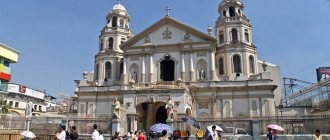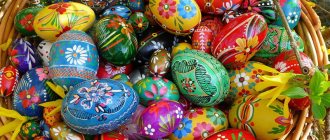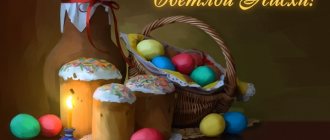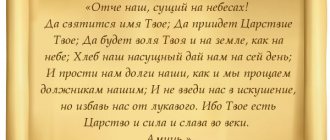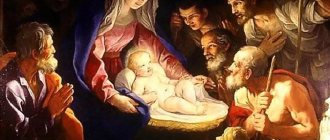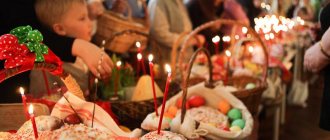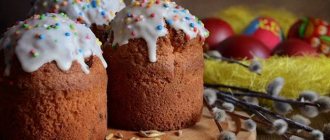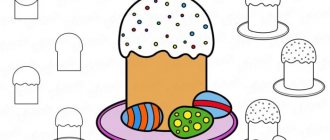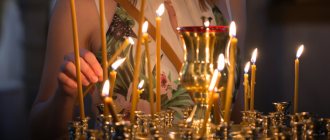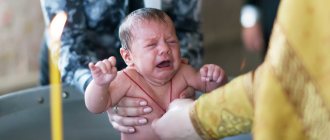Once a year, the entire Christian world celebrates a sacred holiday - Easter.
The Messiah is the same for all Christians, but the date of the celebration and the hours of church services vary. This is the influence of the Julian and Gregorian, lunar and solar calendars, by which years and dates are calculated in different countries of the world. There are Christian communities in every country in the world - prayer sounds everywhere. And yet, despite the commonality of celebrations, there are characteristic differences in celebrations - for every country in the world.
In different parts of the world, the canonical traditions of Easter are intertwined with the characteristic features of nations and peoples. This is how interesting differences were formed in ritual actions, decorations of houses and festive tables. Housewives of all countries prepare ritual dishes, but the recipes of the North differ from the South, and the West from the East.
Easter traditions in Europe
In most European countries, although the faith is Christian (and in a number of them the religion is declared the state religion), the church is mainly Catholic. And the Orthodox rites and rituals that are familiar to us are not in use in Western and Central Europe.
Easter in Europe, like hundreds of years ago, is celebrated magnificently, brightly, on a grand scale. Dwellings, temples, streets, institutions are decorated with spring greenery, flowers, and decorated with ribbons. Symbols in the form of painted and chocolate eggs (from street art to toys and decorations), and elegant Easter bunnies are common. And at the same time, each European country has its own rituals and attributes characteristic of a particular area.
Germany
In Germany, the Resurrection of Christ is a national holiday with two official days off. By the way, if we look at European Easter history, this is exactly the country where the tradition of coloring and then lighting eggs, but unusual ones, was born, but brought by a hare (later it became a rabbit). This pagan symbol of spring from ancient Germanic myths emigrated into church traditions and gets along well with them, bringing chocolate eggs to obedient children. German children are busy searching for rabbit eggs on the morning of Easter Sunday: adult family members lay out baskets of sweets in advance in hidden corners of the house and yard.
Daffodils, the main holiday flower, are grown in Germany especially for Easter. Bouquets are placed in gift baskets and woven into wreaths, which are sure to decorate the doors and windows of elegantly decorated houses.
In the southeast of Germany, not only people, but also horses march to the temple. Bavarians, dressed in national clothes, weave ribbons and miniature wreaths into their manes. The priest blesses the equestrian procession.
An obligatory tradition is to decorate trees with colorfully painted eggs. And, of course, visits to family and friends. Housewives treat guests to baked fish and lamb, lemon lamb pie, chocolate cookies and painted (usually red) eggs.
England (UK)
In England, schoolchildren enjoy Easter the most - they begin a two-week holiday. And then the time comes to receive free gifts from complete strangers: it is customary for residents of Foggy Albion to hand out toys in the shape of the ubiquitous rabbit and sweets to children on Easter Monday on the streets.
A good English tradition is attending organ music concerts, held everywhere in churches on Easter Day. People come to church wearing new clothes (an echo of the pagan ritual of saying goodbye to winter and welcoming spring).
Among the food that is blessed during the service are eggs (a dessert with caramel filling) and ritual buns with raisins, so thickly stuffed with spices that the initially sweet pastry becomes bitter - a symbol of the bitterness experienced by the Savior.
Simnel, a two-tiered light cake decorated with egg-shaped bombs, is always placed on the refectory tables. Garlic-honey meatballs, roast lamb, and pork are always present.
Simnel
The British enthusiastically play football, using a beer keg of light beer instead of a ball. They dress in white suits, tie small bells to their knees, and dance the folk morris dance to live music - in the streets, squares and even in churches. On Monday, men run with women in their arms; on Tuesday, wives run under the weight of their husbands. Fun is the main attribute of the English Easter festival.
Poland
Devout Poles go to the Easter service with their families, bringing swiętsoku (large baskets with Easter symbols) to the services for illumination. They break their fast with liver pies, juicy homemade sausage and cheese, turkey, pork, and tree pie cooked over an open fire (senkach). And in the center of the table there is a snow-white sugar or flour lamb, baba (a cake similar to Easter cake) and painted eggs, consecrated in the temple. There is always salt and horseradish - symbols of purification and the suffering experienced.
The lunch is dedicated to deceased relatives - Easter treats are brought to the cemetery. And they return to the table again. Sunday is a day of satiety and celebration.
The fun starts on Monday. Adults and children hit each other with brightly colored eggs. It is believed that the one whose egg remains intact will have the luckiest year. One of the most amusing games is smingus-dyngus - water bombardment. There is a sign: the wetter an unmarried girl is, the more likely she is to get married this year - the guys really like her.
France
An assorted bell chime is a French Easter symbol. Children believe that on the eve of Christ's Resurrection, temple bells are “sent” to Rome for the papal blessing, and magically return back with gifts - chocolate twin brothers.
No celebration is complete without sweet fish and eggs. It is interesting that children find some of them not on the table, but on trees decorated with colorful ribbons - in nests made of straw, branches and flowers, or in baskets.
There is also “egg fishing”: a carriage drives into the square and scatters eggs wrapped in festive packaging and tied with ribbons. It’s for them that everyone who wants to fish the Easter delicacy from the grass. You can also try a free omelet, buy brioche, and tiny meringues.
Easter in France
Easter nests
And a festive feast (often in the form of a picnic) is impossible without baked leg of lamb with Provençal herbs, lamb sponge, and campaniel (sweet bun) with a whole egg inside.
Italy
Bryndllon's "Cart Explosion" is a pyrotechnic stylization of the kindling of a sacred fire. “Duels” of evil spirits with believers – “Festa dei Giudei”. Performances are about the life of Jesus, the struggle between the forces of hell and heaven with the obligatory victory of good. The Easter parade, the way of the cross in front of the Colosseum led by the Pope - all this is Italy during Easter days.
The Mediterranean state is full of surprises and traditions. Comic matchmaking with eggs is still popular in the mountains - boys ask girls for eggs, believing that if they collect 12 eggs, they will get married this year. Girls who were not asked for anything bury their eggs on the day after Easter Tuesday so as not to remain virgins for too long.
In Sicily, death and the devil disturb believers participating in processions with statues of Our Lady and the risen Jesus - “Prizzi's Dance of the Devils”. But they are always brought down by angels to the sound of triumphant bells.
Italy is also replete with culinary traditions. The main Easter baked goods vary from region to region. This could be Colomba - a sweet pastry in the shape of a dove with outstretched wings (instead of glaze - almonds in sugar syrup). Pasqualina - unsweetened, covered pie filled with cheese, herbs, half eggs. Panettone is a dome-shaped sweet bread with candied fruits and raisins. On the first day, all this delicacy is eaten in a close family circle, then (for two days) they have fun picnics - Pasquetta - with friends and acquaintances.
Spain
In Italy, Easter is celebrated with a general week of holidays and holidays. In addition to traditional services and sumptuous meals at an elegantly decorated table, the country blossoms with processions: staged, costumed, and with musical accompaniment.
Processions, led by decorated platforms depicting biblical scenes and saints, “flow” through narrow streets crowded with festively dressed people. On top of them (from balconies in Catalonia and Valencia) pious “confetti” is poured - bright leaves with the inscription “Hallelujah” or religious pictures.
Easter platforms are placed on women's shoulders.
Competition parades take place: families prepare bouquets of intricately intertwined palm branches - boys carry them, girls carry branches with sweets. The priest blesses them as they move.
Among the typical treats for the country: torrijas - pieces of bread soaked in sweet wine or milk, fried, and then sprinkled with syrup or honey; Easter monas - a round sweet cake-ring or braid with an egg insert in the middle (godparents treat their godchildren to it on Easter Monday). Popular brushwood crackers are “Pestinhos” - crispy envelopes with a brightly rich anise flavor, fried in oil.
Greece
Greek Easter always coincides with Orthodox Easter. As soon as the clergy exclaims “Christ is risen!”, bright fireworks fire into the sky - in all corners of the country. If the temples are located opposite each other, “shootouts” are arranged with firecrackers meeting halfway in the morning sky - a symbol of the earthquake that followed the resurrection of the Messiah.
Throughout the week, starting with “Love Monday,” songs are heard in city squares, music festivals, and general festivities take place. Music plays in every way: church, folk, ritual. Everyone dances - in a round dance, in pairs, alone. They roll Paschalina ava - eggs painted in bright red shades - on the table - those that survive will have good luck all year.
Tables are set right there for everyone (at the expense of the city authorities). Among the traditional dishes: kokoretsi - a skewer-baked appetizer of lamb offal, magiritsa (or mayiritsa) - lamb liver soup. The main treats are tsoureki (cross-shaped braided buns, seasoned with wild cherry pit powder) and Paschalino arni - young lamb roasted on a spit.
Belarus
The Slavic brothers have an interesting feature in celebrating holy days - the volition ritual. Groups of men or children slowly drag themselves from house to house, praising the Savior with songs and honoring the owners. They thank them with cakes, pies, sweets, and sausages.
The first Belarusian meal always begins with a blessed egg: it is cut into pieces - according to the number of family members - and, after crossing oneself in gratitude, it is eaten (on an empty stomach).
Godparents and godchildren always exchange gifts - a sign of respect and love. And in the villages, a long-standing tradition has been preserved - egg shells (like crumbs from holiday foods collected over three days) are not thrown into the trash - they are burned.
On the festive tables there are Easter rolls with raisins and candied fruits, sprinkled with fondant or decorated with the letters XB cut out of dough, pies with poppy seeds and jam, and sausage rings. On Monday, families that keep ancient traditions serve carp in melted butter and gentry scrambled eggs - fried boiled and raw eggs, with ham and cottage cheese, dry-cured meat, grated horseradish root.
Ukraine
It is impossible to imagine the Ukrainian week Velikden (Easter week) without Easter eggs, painted eggs, speckled eggs, malyvankas, rags, eggs - ritual edible and decorative eggs, decorated with a variety of techniques. And also without ritual dishes: butter and curd paskas - domed and trapezoidal (with a cut off top).
Along with the chanting of Christ, stoneflies are heard in the streets, calling for spring. In recent decades, Easter installations have been installed in regional cities and district villages - huge painted, openwork, illuminated eggs. Fairs and festivals “Holiday of Easter eggs” are held.
Previously accepted only in the western regions of Ukraine, the custom of pouring water on girls on Monday, and on Tuesday on boys, is now turning into a widespread “drenched battle.” The Hutsul tradition of decorating trees with decorated eggs also extends to almost the entire territory of the country.
Norway
The holy day in Norway is permeated with yellow: chickens, ribbons, eggs in golden wrapping, a rabbit in foil with a sunny hue. And also specially grown daffodils, which are called Easter lilies here...
Most Norwegians are Lutherans. They have their own view on the celebration. After the traditional search for treats from the egg-laying rabbit, families go for a weekend of skiing in the mountains - a modern version of the long-standing tradition of meeting the first Easter sunrise in the mountains. Many people go on short-term vacations to the south. People with more modest incomes sit in front of the TV to watch Easter detective stories. The book series “Easter thrillers” are popular here, and Yahtzee poker is played with dice. Young people prefer playing computer games together – in large groups in a large gym.
In addition to eggs, the festive table includes pancakes, a dish made from rye flour, salt, sugar and malt, served with vanilla cream or cream. Norwegians treat themselves to baked lamb and fish.
Baltics (Latvia, Lithuania, Estonia)
The dominant Baltic religion is Lutheranism. For this denomination, lavish celebrations are not in use. Easter is celebrated in a narrow family circle or in the company of good friends.
There is Catholicism and Orthodoxy here. Everything was mixed up. But in ritual actions, the decoration of houses with wreaths and figurines of birds suspended from the ceiling - a tribute to the souls of ancestors, the exchange of gifts - still prevails.
And yet, in these countries, Easter is more like a pagan meeting of spring. By the way, in Estonia the holiday is called Spring, Swing or Egg. Traditional games: lighting fires, flying on swings (they are built in prominent places by men for brides and wives), riding on empty carts, breaking and rolling eggs decorated with ornaments. And also - singing spring songs and solving riddles.
The set of holiday dishes includes: cottage cheese Easter, egg butter, omelet, cottage cheese with cumin, mint, garlic or raisins, baked pork, chicken jellied meat, stuffed fish and eggs.
Finland
Finnish Easter is yellow and green: the main decorations are golden chickens, sunny bunnies are decorated on sprouted oats, rye or spring grass. Houses are decorated with fresh and homemade flowers, bouquets, wreaths made of fabric, feathers and ribbons.
Children, according to European tradition, look for chocolate eggs “scattered” around the house - whoever finds the most will get a chocolate bunny, and the least will get a chicken. But unlike their neighbors their age, the kids here believe that trolls and good witches are celebrating the holiday with them. They themselves willingly dress up in witch costumes. They collect willow branches entwined with paper flowers and colorful feathers into baskets, go from house to house and recite a comic spell for health and well-being. Anyone who exchanges willow for a delicacy receives protection from evil spirits.
The Finnish Easter table is unthinkable without sweet pudding made from malt and rye flour, blood sausage, and baked lamb.
Czech Republic and Slovakia
One of the traditional Easter rituals in these Eastern European countries is the “beating” of girls. Men from the willow vines that have just sprouted “seals” weave a whip in the form of a 2-meter braid and whip the girls. But they do not shed tears, but thank the “tormentors” with colored eggs - through the willow “blow” beauty and health stick to them.
On the same or the next day, the female half is subjected to another execution - dousing with cold water collected at dawn on Sunday. This is how they wish health to beauties and show their respect.
Having dried and warmed up, young people and the older generation go to Easter markets, where they not only buy something, but also participate in spring chants, similar to Russian carols.
On the festive tables there are Mazants - a rich substitute for Russian Easter cake with raisins, nut muffins in the shape of a lamb, sweet yeast babovka, ham, stewed rabbit, potato salad, homemade liqueurs for breaking the fast.
Romania
The Easter celebration in Romania begins with the lighting of candles after the service in the temple - the holy fire is carefully carried home. And it’s a disaster for the one whose light goes out - it is believed that by doing so the Lord testifies to the unworthy behavior of the celebrant.
According to tradition, everyone tries to wash themselves with water in which a blessed egg, coin and basil are dipped. This is how Hungarians call for prosperity, health and beauty. Relatives try to hit themselves with eggs - according to popular belief, the one who “hit” on the first Easter day will see his relatives after death. On Monday, the eggshells are “floated” into the river - the water takes them to the land of the spirits - to appease them.
Tall bushes and young trees are decorated with painted eggs, like New Year's toys. Numerous concerts and festivals are held with performances by folklore groups. A unique ritual is “Shooting a rooster” (not a live one - a painted target). Men, young and old, use darts and stones to get rid of “guests” who bring evil and misfortune to the community.
The feast on holy days is led by milk rolls and Easter breads with cheese, cream, chocolate, lamb dishes, ham of all kinds, and pate (drob) made from lamb liver.
Italy
For residents of Italy, Easter is one of the most favorite holidays. They celebrate the occasion with a family dinner and a traditional mass celebrated by the head of the Catholic Church in the main square of the Vatican.
Italians usually prepare fried lamb, traditional cheese cake, Neapolitan pie and colomba - similar to Russian Easter, only more lemony. Easter eggs are also very popular. The next day they have a picnic with friends and neighbors.
USA (America)
In the USA there is a wide range of Easter celebrations, which can be divided into church and secular ones. The former include worship services, masses, vigils, sunrise services, and food illumination. The second - multi-scale shows - America is literally boiling with parades, carnivals, and festivals. Even hunting is officially permitted in parks – within the boundaries of populated areas. Symbolic prey for both adults and children are surprise eggs scattered in the grass. The more you collect (the clock is set on a timer, the excitement is off the charts), the more goodies you get - each one is filled with sweets.
The presidential orchestra is playing on the south lawn of the White House, and an animator bunny invites children to a national competition (broadcast live on a national channel) - rolling wooden Easter eggs with a kitchen spatula.
Park bowling alleys with giant pins and egg balls are open all over the country. Funny Easter bunnies read Bible stories to children, conduct paid photo sessions, master classes on holiday crafts in the style of different eras, and actively invite them to take part in entertaining quests.
Manhattan is full of breathtaking outfits and fantastic headdresses - the Hat Parade takes place here every year. Thousands of Americans from all states and districts are participating in the flash mob.
Family dinners are a key part of the celebration. There is no strict set of Easter dishes, but most likely on the tables you can see ham baked in glaze, “cross” buns stuffed with raisins, apples with cinnamon, chocolate, and oranges. A special place is also given to Easter bread with marshmallows in the center, lamb served in the form of kebab or chops, gingerbread and cookies in the form of an eared symbol of Catholic Easter.
Czech
Eggs, rabbits, birds and sweet pies are traditionally popular in the Czech Republic. True, you won’t find Easter cake here, but they sell sweet gingerbread lambs. In addition, in the Czech Republic, a bunch of fairs are opened for Easter, which are not inferior in scope to Christmas ones.
You can see a strange attribute called pomlazka on sale. It refers to an ancient ritual during which guys whip the girls they know with these wicker rods. The one touched by the honey will be healthy, fertile and beautiful all year.
Canada
The harsh climate and mix of cultures have transformed the holiday traditions of Canadian Easter, giving it more spring motifs than religious ones - people crave fun. And the leitmotif of the two official weekends - Sunday and Monday: family vacation, fun, games, drive with full blast.
Tons of chocolate bunnies and eggs are sold - with and without filling - symbols of prosperity, thousands of lilies - purity. Having exchanged baskets of gifts, Canadians rush into the streets - into a whirlpool of celebrations: an exciting egg hunt, a dance party of thousands - a festival of very free morals with a frantic pace of electronic music and a bright light show. The most famous and large-scale takes place in Montreal.
On the Vancouver Islands they organize Easter beach parties. A grand parade is taking place in Toronto, attracting tens of thousands of fellow citizens - a mix of traditional paraphernalia led by a rabbit, assorted cosplays, festively decorated antique cars, marching musicians, sports schools, clowns and cartoon characters.
In Vegreville, Ukrainian folk songs are heard around a giant pysanka (a symbol of Canadian unity). In Halifax, Scottish bagpipes are singing, couples are circling in the ri.
Theatrical performances “with the Passion of Christ” take place everywhere, and at the festive tables the hosts treat guests and loved ones to cross-shaped buns dipped in glaze, lamb ham, Easter curds in the shape of a dove, and cakes made from 33 thin cakes (according to the number of earthly years lived by the Son of God).
Finland
Easter in Finland overlaps with another holiday - the arrival of spring. Traditionally, they look for Easter eggs brought by the rabbit and celebrate the Easter celebration with food and pies. At the same time, in Finland, all branches of Christianity are celebrated together - Catholics, Orthodox, and Lutherans.
An interesting Finnish tradition at Easter is the witch festival. All the time, from Good Friday to the Resurrection of Christ, it is considered a witch's day, so children dress up in appropriate outfits and beg passers-by for candy and sweets. To scare away bad spirits, bonfires are traditionally burned in Finland.
China
Christianity among Buddhism, Taoism, Confucianism, widespread in China, is small. They make the sign of the cross mainly in Shanghai (the largest community), Heilongjiang Province and the capital of the state.
And even though there is no official holiday in China for the Easter holiday, traditions are respected. Believers mostly flock to Beijing for Easter services. Here, on the territory of the Russian consulate, the Church of the Assumption of the Blessed Virgin Mary and the Red Fanza named after. Saint Innocent of Irkutsk. All parishioners cross the church threshold only with a passport - the names of those wishing to do so are included in the list in advance.
Islands of Christian love are also located in the Xinjiang Uygur Autonomous Region (St. Nicholas Church), in Urumqi and two in Harbin.
A decorous theatrical performance based on “biblical chronicles” is staged in church courtyards, and priests teach Orthodoxy lessons to children in Sunday schools. Embassy workers treat the Chinese to Russian Easter pickles - the tables are set right on the embassy premises.
A home meal in mainland China is modest and orderly (more like a family weekend tea party) with hand-made treats - in China they do not sell Easter cakes, dyes or thermo-seals for eggs.
But in Hong Kong, Easter is included in the list of public holidays with a four-day weekend. Children frolic on playgrounds in parks, slamming eggs and rolling them between tasty obstacles - everything that is knocked down is collected in a basket decorated with embroidery (in ethnic and biblical motifs) and spring flowers. Adults gather in large groups in restaurants, breaking their fast with fortified Cahors, sausages dipped in soy sauce and meat dishes.
Spain
In Spain, too, Semana Santa, the name of Holy Week, takes place all seven days before Easter. Many entertainment venues are closed at this time, and people observe church traditions. And along the city streets there are so-called processions of penitents - people walk in red caps with slits for their eyes. The sight is quite creepy for foreigners!
On Easter itself, Spaniards go to church services in the morning, and dinner is organized with the family with traditional eggs and Easter cake.
Australia
Easter on the Green Continent falls in the spring and at the beginning of the autumn season. Anglicans, Lutherans, and Catholics go to churches, have Sunday Easter meals with relatives, and exchange Easter gifts in the form of chocolate eggs and animals. Interestingly, the European Easter Bunny is increasingly transforming in Australia into the rarest rabbit bandicoot, living only on this continent - the cute, long-eared, marsupial Bilby.
Vacations and four-day weekends that fall on holidays are full of outdoor picnics, fairs, folklore, and blues festivals. Sports competitions are especially popular: horse racing, yacht racing, football battles, and diving.
Sydney hosts the Royal Easter Show with a unique interactive exhibition of birds and animals - farm and domestic. You can pet them, cuddle them, cut them, milk them... There are pavilions with Easter treats everywhere, as well as attractions and concert venues. There is a rodeo, circus performances, arm wrestling and wood chopping competitions. The culmination is a costumed grand parade and a giant fireworks display.
The Australian Easter menu includes sugar buns with the image of a cross (Easter breakfast starts with it), a bright meringue cake with slices of kiwi, pineapple, and strawberries. Hot appetizers are in use: fried beef and lamb, beans, broccoli, chicken with potatoes and carrots, baked pumpkin.
Austria
Austrians go to church on Easter morning, and after morning mass they gather with their families. The holiday begins exactly at three o'clock, relatives sit down at the table and exchange Easter gifts - eggs and hares. By the way, in Austria it is customary to color eggs green, it symbolizes hope.
A week before this celebration, Easter markets open in Austria, where traditional souvenirs are sold. In addition to various variations of eggs and hares, Austrians love wax figurines of biblical characters.
Despite the fact that Easter is based on the same event from the history of Christianity, it is celebrated in different ways. Each country has its own traditions that are preserved from year to year.
Japan
“Harisutosu fukkatsu,” Japanese Christians greet each other on Easter, and in response they hear: “Jitsu-ni fukkatsu.” They go to Orthodox churches, bless colored eggs for Easter and ritual baked goods, and after the Easter liturgy and procession they celebrate the celebration with their community or (as in China) in the family circle.
Every year on the eve of Christ's Resurrection, cherry blossoms bloom in Japan. Its branches are used to decorate houses and decorate gifts. Even on eggs, Japanese housewives depict delicate spring flowers. Modern children who participate in egg painting prefer drawings from anime - an innovation that has recently crept into the almost two-century history of Japanese Easter.
In addition to traditional Easter cakes - thickly flavored with candied fruits and honey, on the Japanese table these holidays there are dishes of quail and pheasant, chicken on skewers, grilled beef, and beans.
Germany
The main symbol of the holiday for the Germans, besides eggs, is Easter bunnies. It is Germany that is traditionally considered the birthplace of this long-eared animal, which delivers gifts and hides eggs before the holiday. The Easter bunny in this country is called Osterhase, and before Easter he is everywhere and in any design - chocolate, plush, paper, wood and even wax.
Germans get two days off for Easter, so the holiday begins on Green Thursday, the day when all food is green. On Friday, which is considered Holy Friday, clubs and dance floors are closed. The main holiday is on Sunday, when the Germans throw a feast, the main decoration of which is lamb dishes. And the children have fun searching for the eggs that the rabbit hides literally everywhere!
Jerusalem
The first place where God's Spirit dwelt, and now stands the tomb of Jesus. The center of three world religions and all Christian denominations. Tens of thousands of pilgrims from all over the world flock here to worship and pray for the sending of the Holy Fire.
Throughout the entire Easter Orthodox week in Jerusalem, every tree and bush blooms and smells fragrant. The flowering then wilts due to heat and dryness.
Multiethnic believers fill the Church of the Holy Sepulcher on Holy Saturday. Everyone has a candle in their hands. They wait for the sacred flame to blaze in the chapel erected above the tomb. Its doors are sealed, and the seal will be removed only with the arrival of the Greek patriarch, who brings 33 candles here - this is how old Jesus was at the time of the crucifixion and subsequent resurrection.
Only after the prayer of the Orthodox priest does the fire descend to the believers. Its harbingers are the glow on the walls of the domed chapel, the solemn ringing of bells. The flame initially spreads around the patriarch without damaging him, and then the tongues of the patriarchal candles spontaneously ignite. He passes it on to the believers - everyone rushes to light their candle bundle.
The fire, bringing truth and peace, is delivered to Russia by plane by delegates from the Andrei Privozdanny Foundation. They carefully hand it over to the Patriarch of Moscow and All Rus' in the Cathedral of Christ the Savior, and then it spreads throughout the country - between parishes.
Russia
In Russia, this event can be compared with Christmas and New Year in terms of the scale of celebration. In almost every home, preparations for Easter begin within a few days - housewives bake Easter cakes, make Easter cottage cheese, and paint eggs. Believers spend the whole night at the service, waiting for the rise of the Holy Fire.
And in the morning, the baked Easter cakes are taken to the church for lighting. One of the Easter traditions is Christening, which is the name of the Easter greeting and breaking eggs against each other. Since this day falls on Sunday, Russians do not have an additional day off.
Mexico
Mexican Easter - Semanta Santa (a week before the solemn day of the Resurrection - Mexicans “torture” themselves with strict obedience and even torture) and Semena de Pascua (Easter week). All state-owned enterprises and schools are closed - people participate in religious celebrations, theatrical performances, and glorify Christ.
In addition to religious experiences, they have fun, have fun, and go to carnival processions. The latter are held with pomp - costumes, fiery dances, life-size puppets, masks, fireworks - until the morning.
Instead of the European knocking of eggs, there is a tradition of smashing them on each other's heads. The eggs are not simple - filled with confetti painted in sacred colors. The essence of “beating” is to shower a person from head to toe, so that happiness, health and all sorts of good things accompany him all year long.
The Mexican Easter menu includes dishes of lamb's heads stuffed with liver, crispy lamb tongue croquettes, and unleavened tortillas fried in oil. Dessert – chocolate Easter figures, rainbow gelatin eggs, pudding with cheese, nuts and pieces of fruit.
Portugal
During Easter week, all sacred places in the cities of this country are decorated with snow-white flowers. And the center of Portuguese Catholicism, Braga, is completely dressed in white, because the main events take place there. In Portugal, there are many processions with palm branches before Easter.
One of the unusual traditions in Portugal is the “burning of Judas.” It is somewhat similar to our Maslenitsa; a stuffed animal is also installed, which is decorated with candies and other sweets. Children climb up it and collect goodies, and after Judas is “ripped off,” he is ceremonially burned.
Africa
African Easter is a cocktail of humility, religious jubilation and frantic energy. The holy day is celebrated in South Africa, Ethiopia, Cameroon, Tanzania, Uganda, Nigeria, Ghana, and Kenya. All canonical traditions are observed: from fasting, church services and masses, to family meals with ritual dishes.
And yet the African temperament and mobility take their toll - Africans are already singing and dancing in temples. Choral singing is in the blood of all the peoples of the hot continent.
It is impossible to imagine the inhabitants of the Dark Continent without colorful carnivals. Ritual performances last until midnight. Moreover, group dances have a clear purpose - from spells, praise to the gods to appeals to the spirits of fertility. Dancers wearing masks, helmets, headbands and colorful ethnic costumes fall into a trance.
A special Easter dish is spicy chicken baked in coals. People also enjoy a spicy casserole made from minced beef and fruit, and banana muffins.
Greece
For the Greeks, Easter is also one of their favorite holidays. From the very morning they set tables, roast lamb on coals and organize many events. On this day, the inhabitants of Greece hug each other, congratulate each other with kisses and exclaim Christ Anesti!
The whole week before Easter is filled with church events, which the Greeks treat with respect. Within 40 days, most residents of this country begin fasting, although seafood is not excluded. A few days before Easter in Greece, all entertainment activities stop and preparations for the holiday begin.
India
Indian Christian communities (Protestants and Catholics) are small, but Easter is noticeable among national festivals - religious solemnity prevails.
Believers on Easter Sunday go to the temple for the sacred Hindu ritual prayer service “Request for forgiveness of sins” - a daytime service. The state of Goa hosts a vibrant festival called the Way of the Cross. Festively dressed people march along the “path to Golgotha” to the sounds of an orchestra, accompanying a wooden cross from the threshold of the church to the symbolic place of the crucifixion.
For two weeks, Indian Christians participate in street performances, dance and sing Easter hymns, inviting non-Christians and simply curious spectators to the celebration.
The most common Easter gifts for Hindus are Easter lanterns painted in all the colors of the rainbow, natural and artificial flowers. Ritual eggs and sweets are not prepared - they are bought.
Meals are traditionally family meals. But the festive dishes are served in an original way - on banana leaves. Hindus prefer creamy Rasa Malai - curd balls, sweets Pista Barfi - milk with pistachios, rice-lentil pancakes with ginger sauce, tandoori chicken.
The modern world willingly weaves religious holidays into secular life. And a worldly person, far from confessions, religious processions, night vigils in churches, joyfully participates in Easter traditions, willingly using symbols and eating ritual dishes. The Holy Resurrection of Christ is an unchanging triumph that unites the Christian world and all believers.
Great Britain
For Catholic England, Easter is one of the most revered holidays of the year. Before this event, all schools close for a two-week holiday. Traditionally, on Sunday, the British go to church with Easter baskets filled with colored eggs and various goodies. And in the morning, sweet baskets and painted eggs await the children.
At Easter in Britain it is customary to wear something new in clothes - this custom symbolizes the arrival of spring. The premises are decorated with daffodils, branches with swollen buds and white lilies, and organ concerts are held in churches.
Interesting Facts
• The most favorite sweet of Catholics is a chocolate rabbit. Moreover, about 76% of Catholics initially eat the ears of hares.
• The world's largest Easter cake, weighing more than 2 tons and 2.4 meters high, was baked in 2011 in the village of Yalta, Donetsk region.
• The action of Mikhail Bulgakov's novel “The Master and Margarita” takes place during Holy Week and ends on the eve of Easter night.
Easter. Photo: https://pixabay.com
The information used in the preparation of the material was taken from open sources.
